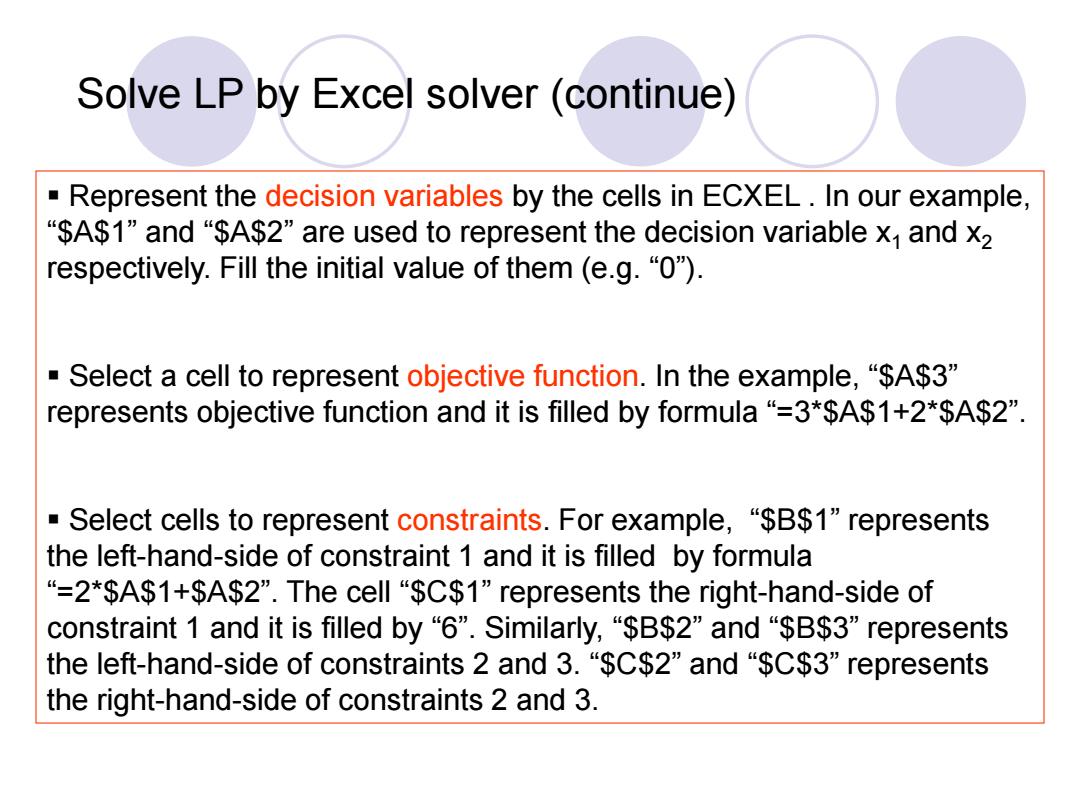正在加载图片...

Solve LP by Excel solver(continue) -Represent the decision variables by the cells in ECXEL.In our example, “$A$1”and“$A$2”are used to represent the decision variable x1 and x2 respectively.Fill the initial value of them (e.g."O"). Select a cell to represent objective function.In the example,"SA$3" represents objective function and it is filled by formula"=3*$A$1+2*$A$2". -Select cells to represent constraints.For example,"$B$1"represents the left-hand-side of constraint 1 and it is filled by formula “=2*$A$1+$A$2”.The cell“$C$1”represents the right-hand-side of constraint1 and it is filled by“6”.Similarly,“$B$2”and“$B$3”represents the left-hand-side of constraints2and3.“$C$2”and“$C$3”represents the right-hand-side of constraints 2 and 3.Solve LP by Excel solver (continue) Represent the decision variables by the cells in ECXEL . In our example, “$A$1” and “$A$2” are used to represent the decision variable x1 and x2 respectively. Fill the initial value of them (e.g. “0”). Select a cell to represent objective function. In the example, “$A$3” represents objective function and it is filled by formula “=3*$A$1+2*$A$2”. Select cells to represent constraints. For example, “$B$1” represents the left-hand-side of constraint 1 and it is filled by formula “=2*$A$1+$A$2”. The cell “$C$1” represents the right-hand-side of constraint 1 and it is filled by “6”. Similarly, “$B$2” and “$B$3” represents the left-hand-side of constraints 2 and 3. “$C$2” and “$C$3” represents the right-hand-side of constraints 2 and 3